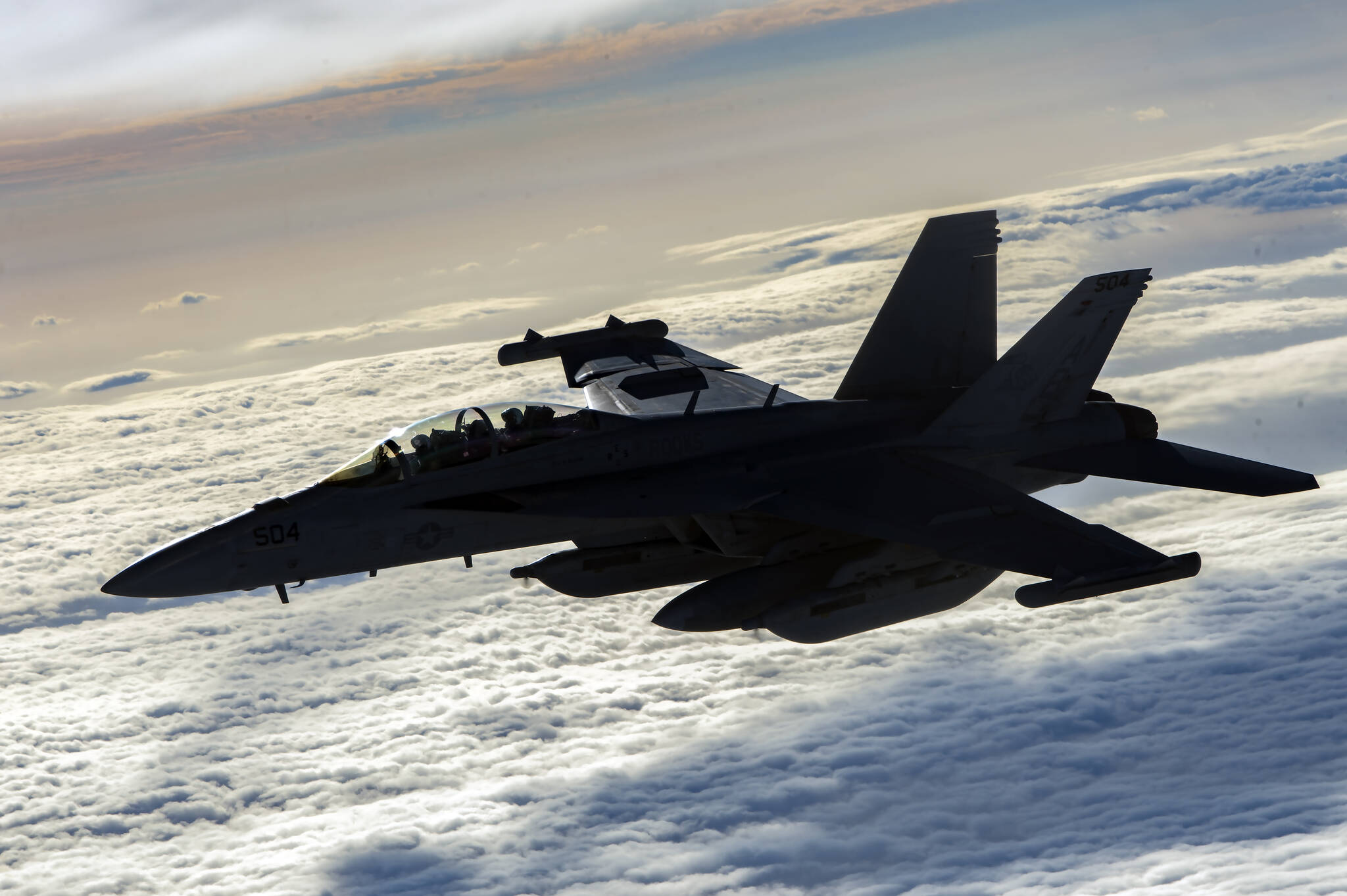The U.S. Navy’s fiscal year 2023 budget proposes to mothball all five expeditionary EA-18G Growler squadrons at Naval Air Station Whidbey Island.
The Navy’s recently released budget highlight book states that these expeditionary, or non-carrier-based, electronic attack squadrons, or VAQ, consist of 25 airplanes and approximately 1,020 associated officers and enlisted personnel. Under the proposal, about half of the Growlers would be decommissioned in fiscal year 2024 and the remainder in 2025.
The Growlers would be placed in long-term storage at Aerospace Maintenance and Regeneration Group in Tucson, Arizona. The projected savings over the Future Years Defense Plan is $807 million.
The proposed decommissioning would have a significant impact on the Growler force but not on the carrier landing practice at Outlying Field Coupeville or Ault Field; expeditionary squadrons do not land on carriers and so do not do “touch and go” field landing carrier practice.
In addition to the expeditionary squadrons, NAS Whidbey has eight carrier-based squadrons and a reserve squadron.
Under a 2019 Record of Decision following an Environmental Impact Statement, 36 additional Growlers aircraft, including two new expeditionary squadrons, were approved for NAS Whidbey. The decision authorized a total of 118 Growlers at NAS Whidbey. Currently, 111 of the aircraft are assigned to the base.
U.S. Rep. Rick Larsen, a senior member of the House Armed Services Committee, said he hasn’t heard directly from the Navy about the Growler plans, but he’s reached out for more information. He pointed out that six expeditionary Growler squadrons from NAS Whidbey are currently deployed to Europe “supporting NATO and U.S. defense and deterrence missions in Europe in response to Putin’s unprovoked invasion of Ukraine.”
“I remain committed to ensuring the base and its missions remain strong and NASWI-based squadrons are able to protect national security and support global allies and partners,” he said.
Likewise, NAS Whidbey Public Affairs Officer Mike Welding pointed out in an email that “VAQ capability continues to be essential to the Joint Force and is currently supporting operations in both the U.S. European and Indo-Pacific Commands Areas of Responsibility.”
The loss of the squadrons and the 1,020 associated personnel would be a sizable change for the base and North Whidbey. The number of active duty personnel on the base is currently about 9,000 and was expected to increase to 9,200 in the next few years, according to the base.
The budget proposal appears to be a change in direction for the military.
The Boeing EA-18G Growlers are variants of the F/A-18F Super Hornet equipped to conduct electronic warfare, usually to protect other members of the military from enemy attacks. Sea Power Magazine reports that the U.S. Navy is the only provider of expeditionary electronic attack jets to the Joint Force and that the expeditionary VAQ squadrons are considered high-value assets by the Joint Chiefs of Staff.
The Navy’s 2023 budget also includes a $37.5 million EA-18G Aircraft Fleet Readiness Squadron Training Facility at NAS Whidbey.



